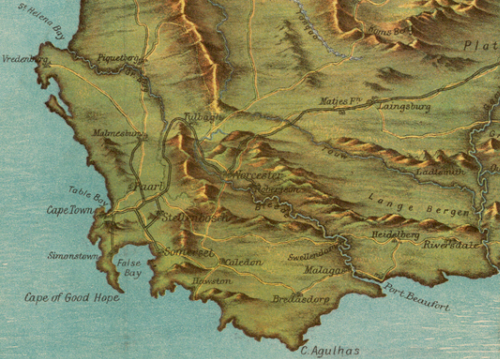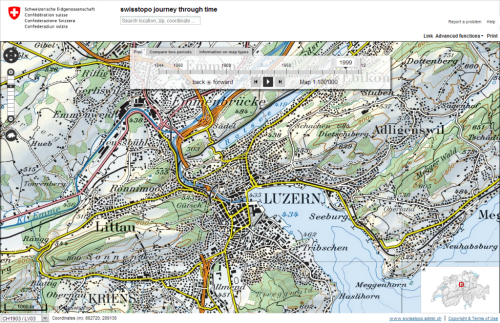 As far as cartographic curiosities go, the creation of a large concrete scale model of Scotland has to be one of the most bizarre. All the more when you appreciate it was built by a Polish war veteran. The Great Polish Map of Scotland, or Mapa Scotland) measures 50m by 40m and is located in the grounds of Barony Castle Hotel in the village of Eddleston in Scotland. It was constructed between 1974 and 1979 and is arguably the world’s largest terrain model…which makes it’s design somewhat impressive.
As far as cartographic curiosities go, the creation of a large concrete scale model of Scotland has to be one of the most bizarre. All the more when you appreciate it was built by a Polish war veteran. The Great Polish Map of Scotland, or Mapa Scotland) measures 50m by 40m and is located in the grounds of Barony Castle Hotel in the village of Eddleston in Scotland. It was constructed between 1974 and 1979 and is arguably the world’s largest terrain model…which makes it’s design somewhat impressive.
 The map was conceived by General Maczek and Polish companions as a reminder of their part in the defence of Scotland and of Scotlands wartime hospitality during World War II. Maczek had a love of geography and so a giant relief model. The hotel had been used as a base for Polish forces during the war and some years later another Polish war veteran, Jan Tomasik, became owner and his friend, Maczek, stayed there subsequently. Tomasik had by this time set about restoring some of the water features in the grounds and he and Maczek set about creating the giant map.
The map was conceived by General Maczek and Polish companions as a reminder of their part in the defence of Scotland and of Scotlands wartime hospitality during World War II. Maczek had a love of geography and so a giant relief model. The hotel had been used as a base for Polish forces during the war and some years later another Polish war veteran, Jan Tomasik, became owner and his friend, Maczek, stayed there subsequently. Tomasik had by this time set about restoring some of the water features in the grounds and he and Maczek set about creating the giant map.
There probably aren’t many maps made entirely out of concrete and which have water channels and pumps to surround it with fresh sea water. This was a monument on a monumental scale but which took Polish workers only a few weeks to build. The map is at a scale of 1:10,000 and has a 5x vertical exaggeration in line with the standard adopted by allied forces in WWII.
The map has fallen into disrepair though coupled with current owners De Vere hotels, the map is currently undergoing a restoration. You can see more about the map at the web site here.











